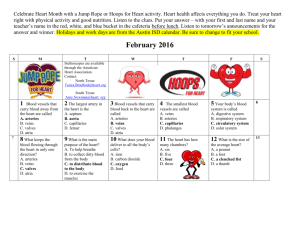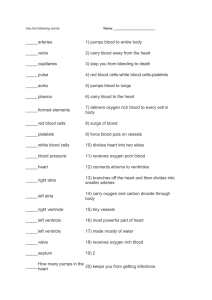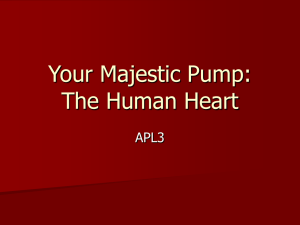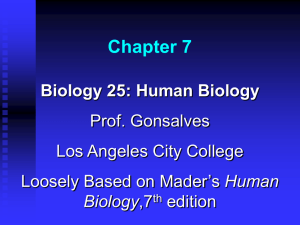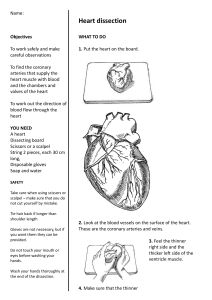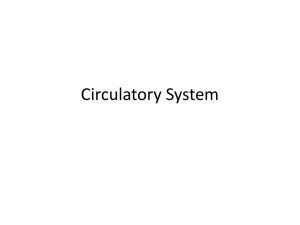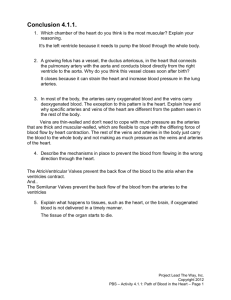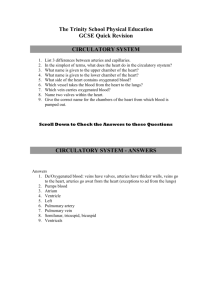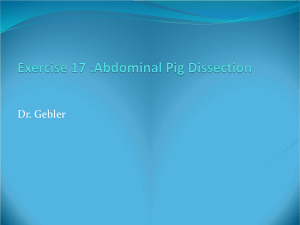Functions of the heart
advertisement
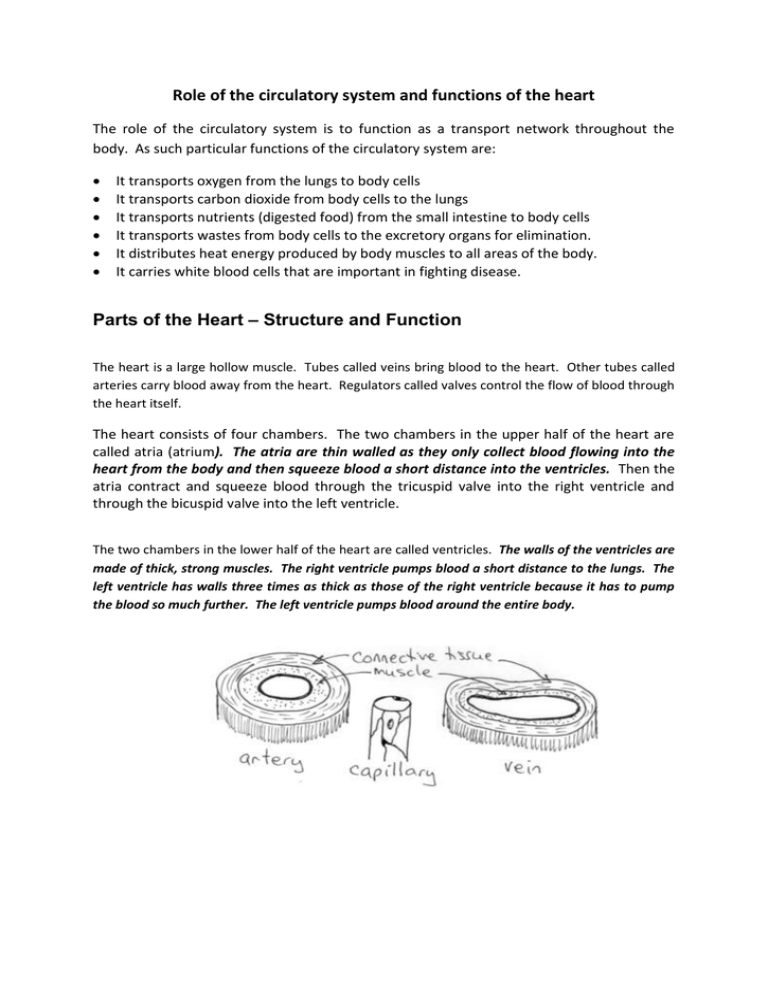
Role of the circulatory system and functions of the heart The role of the circulatory system is to function as a transport network throughout the body. As such particular functions of the circulatory system are: It transports oxygen from the lungs to body cells It transports carbon dioxide from body cells to the lungs It transports nutrients (digested food) from the small intestine to body cells It transports wastes from body cells to the excretory organs for elimination. It distributes heat energy produced by body muscles to all areas of the body. It carries white blood cells that are important in fighting disease. Parts of the Heart – Structure and Function The heart is a large hollow muscle. Tubes called veins bring blood to the heart. Other tubes called arteries carry blood away from the heart. Regulators called valves control the flow of blood through the heart itself. The heart consists of four chambers. The two chambers in the upper half of the heart are called atria (atrium). The atria are thin walled as they only collect blood flowing into the heart from the body and then squeeze blood a short distance into the ventricles. Then the atria contract and squeeze blood through the tricuspid valve into the right ventricle and through the bicuspid valve into the left ventricle. The two chambers in the lower half of the heart are called ventricles. The walls of the ventricles are made of thick, strong muscles. The right ventricle pumps blood a short distance to the lungs. The left ventricle has walls three times as thick as those of the right ventricle because it has to pump the blood so much further. The left ventricle pumps blood around the entire body. Valves are made of flaps of thin, strong fibrous tissue. This allows them to rapidly open and close. Valves control the flow of blood through the heart. These flaps permit the flow of blood in one direction, but they prevent it from flowing back. They are like doors that open only in one direction. They respond to the pressure exerted by the blood. The walls of the arteries are made up of three layers. The structure of each layer is related to its function. The outer layer consists of elastic tissue. Each time the heart beats, this layer stretches to make room for the blood that is being pumped through the artery. The middle layer is muscle (and elastic tissue). After the artery stretches, this muscular tissue contracts and squeezes the blood further through the artery. This means the arteries do a lot of the work of pushing blood around the body. The inner layer, or lining, of the arteries is made of thin, smooth cells (these same cells line the heart, veins and capillaries). This reduces friction and allows blood to flow more easily. Blood flow through the veins is smooth and continuous rather than in the bursts or pulses of the arteries. The pressure of venous blood is very low. Several things can cause the blood to slow down or stop – the weight of the blood, pressure on the vein, or low blood pressure. Then the valves open out, to stop the blood from flowing backward. The valves are usually just above the place where two veins join.
